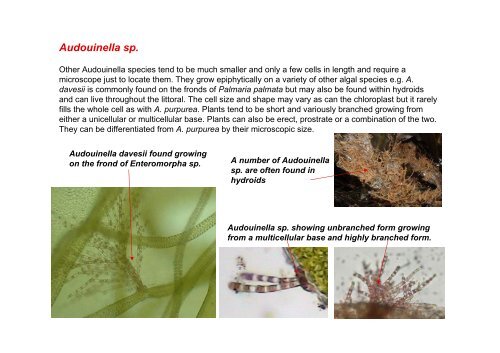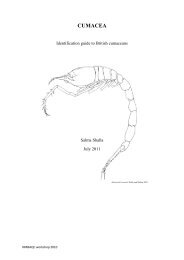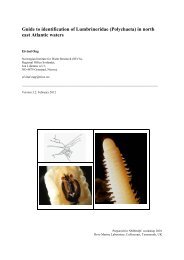s A Field Guide to the British Seaweeds - NMBAQC
s A Field Guide to the British Seaweeds - NMBAQC
s A Field Guide to the British Seaweeds - NMBAQC
Create successful ePaper yourself
Turn your PDF publications into a flip-book with our unique Google optimized e-Paper software.
Audouinella sp.<br />
O<strong>the</strong>r Audouinella species tend <strong>to</strong> be much smaller and only a few cells in length and require a<br />
microscope just <strong>to</strong> locate <strong>the</strong>m. They grow epiphytically on a variety of o<strong>the</strong>r algal species e.g. A.<br />
davesii is commonly found on <strong>the</strong> fronds of Palmaria palmata but may also be found within hydroids<br />
and can live throughout <strong>the</strong> lit<strong>to</strong>ral. The cell size and shape may vary as can <strong>the</strong> chloroplast but it rarely<br />
fills <strong>the</strong> whole cell as with A. purpurea. Plants tend <strong>to</strong> be short and variously branched growing from<br />
ei<strong>the</strong>r a unicellular or multicellular base. Plants can also be erect, prostrate or a combination of <strong>the</strong> two.<br />
They can be differentiated from A. purpurea by <strong>the</strong>ir microscopic size.<br />
Audouinella davesii found growing<br />
on <strong>the</strong> frond of Enteromorpha sp.<br />
A number of Audouinella<br />
sp. are often found in<br />
hydroids<br />
Audouinella sp. showing unbranched form growing<br />
from a multicellular base and highly branched form.




